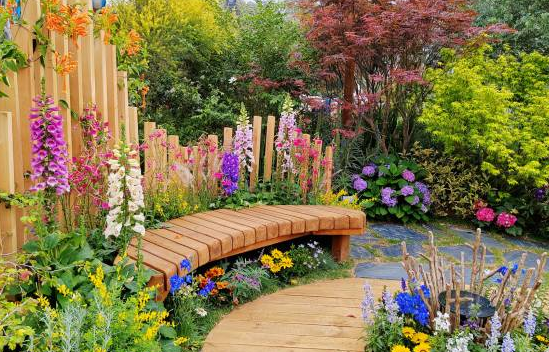It’s exciting to see butterflies fluttering in a colorful and colorful way, fluttering around the garden. As long as you know how to attract butterflies, you can get them to visit regularly. With a little planning, you can create a garden where these insects thrive at every stage of their life cycle, from eggs to caterpillars to adults. In turn, these dazzling pollinators will boost your garden’s productivity and delight you with their vibrant figures.
1. Grow native plants
To turn your yard into a butterfly paradise, start by planting native plants. These garden superstars attract butterflies more than non-native ornamental plants because they co-evolve with butterflies. Many native plants are rich in nectar, which not only provides nutrients for adult butterflies, but also supports butterflies at all stages of their life, including eggs and caterpillars.
Asters, black-eyed susan, echinacea, and goldenrod are all popular native plants that not only nourish adult butterflies, but also serve as hosts for larvae. Butterflies are very picky about where they lay their eggs, choosing plants that provide food for the larvae after they hatch.

Native plants also come in a variety of shapes, sizes, and colors, making it easy to find the perfect fit for your yard. In addition, they require less maintenance, water, and fertilizer than non-native plants because they are able to naturally adapt to your local climate and soil conditions.
To keep butterflies in your garden year-round, choose a combination of plants that bloom at different times of the year. This method provides a steady source of food for the butterflies and allows you to enjoy the vibrant colors from spring to fall. In addition, flowers should be grown in groups, not individually. Clusters of flowers are more likely to be spotted by butterflies, increasing their chances of visiting the garden and staying longer to feed.
2. Supplement with Annuals
While native plants should be the cornerstone of a butterfly garden, the addition of nectar-rich annuals can provide another vibrant and consistent source of food throughout the growing season. Flowers such as zinnias, cosmos, lantana, verbena and sunflowers are extremely attractive to butterflies, and they bloom throughout the summer, so they are also effective in attracting butterflies when native plants are not blooming.
In addition to providing nectar, some annual plants also provide food for caterpillars. For example, some swallowtail butterflies, especially black swallowtail butterflies, will host on parsley plants. To help these butterflies, you might consider planting more parsley, dill, fennel, and coriander leaves in your vegetable garden and be prepared to share these herbs with hungry caterpillars.
Annual plants are versatile – they are easy to grow in containers and hanging baskets, creating a butterfly-friendly environment even in the smallest of spaces. This way, you can experiment with different flower combinations every year to see which one attracts butterflies the most and also looks the prettiest in your yard.
3. Provide Shelter
Butterflies thrive in your garden and not only need flowers, they also need a safe place to rest, hide from predators, and take shelter from the elements. To create a garden suitable for butterflies, plant plants that provide natural shade, such as tall grass, shrubs, and even trees.
When creating shelter in your yard, choose native plants. Clumps of grasses like miscanthus and switchgrass can provide low shade. Shrubs such as the nine-bark tree, dogwood, and elderberry are leafy enough to keep out the wind and provide shelter for butterflies. Evergreens, such as eastern red cedar, American holly, and eastern hemlock, are especially effective in providing shelter for butterflies, especially when other plants are shedding their leaves.
4. Add puddles
While nectar meets most of a butterfly’s energy and water needs, it may lack many of the nutrients that butterflies need, such as salt and amino acids. Butterflies typically look for these missing nutrients in moist soil, as water evaporation leaves nutrients near the soil surface – which is why you often see butterflies congregate around puddles or moist soil.
Creating a butterfly puddle in the garden is an easy DIY project. Simply fill a shallow dish with sand, stir in compost to add nutrients, and add the right amount of water to keep the sand moist to create a shallow puddle. You can even put a few flat stones as a habitat for butterflies. Make sure the soil stays moist, depending on the weather, you may need to add water every day or every few days.
5. Avoid using pesticides
If you want to attract and support butterflies in your garden, it’s best to avoid using pesticides. Many chemicals cannot distinguish between pests and beneficial insects, and they may end up killing butterflies, bees, and other pollinators in your yard. For instance, mosquito sprays might repel mosquitoes but can also harm butterflies and bees.
Instead of chemical treatments, adopt natural pest management strategies. Encourage natural predators like ladybugs, parasitic wasps, and spiders to live in your garden, as they feed on other insects that could damage your plants. Physical barriers, such as row covers, can also prevent pests from reaching your plants. Planting a variety of native plants can help create a robust and resilient garden that thrives without relying on chemicals. Remember, for a vibrant, butterfly-friendly space, a few nibbled leaves are a small price to pay.

